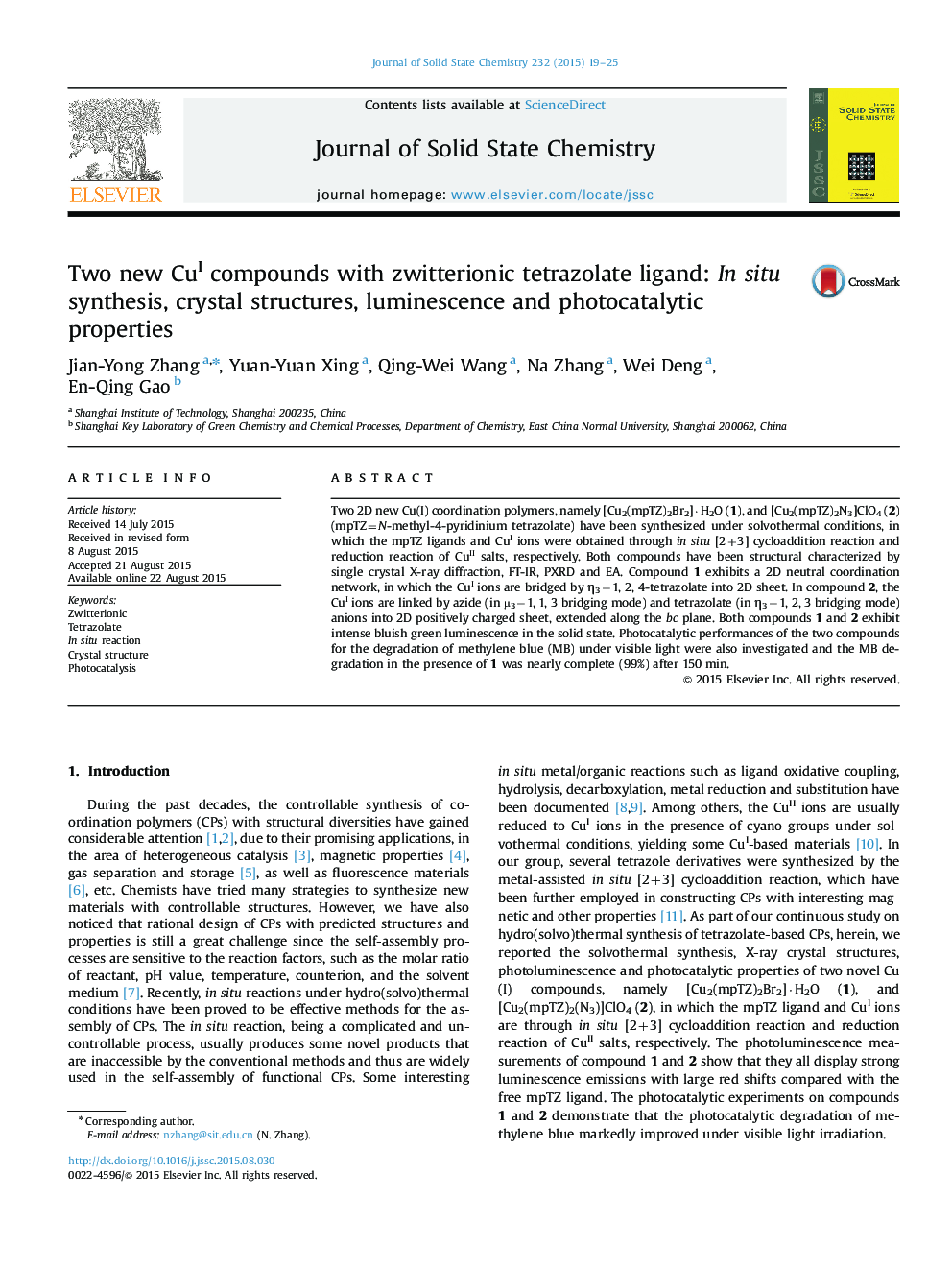| Article ID | Journal | Published Year | Pages | File Type |
|---|---|---|---|---|
| 1329428 | Journal of Solid State Chemistry | 2015 | 7 Pages |
•Two new CuI-based CPs are solvothermally synthesized through in situ [2+3] cycloaddition reaction and metal reduction reaction.•Both compounds exhibit strong luminescence and photocatalytic degradation of methylene blue (MB) under visible light.•The MB degradation in the presence of 1 is nearly complete (99%) after 150 min.
Two 2D new Cu(I) coordination polymers, namely [Cu2(mpTZ)2Br2]·H2O (1), and [Cu2(mpTZ)2N3]ClO4 (2) (mpTZ=N-methyl-4-pyridinium tetrazolate) have been synthesized under solvothermal conditions, in which the mpTZ ligands and CuI ions were obtained through in situ [2+3] cycloaddition reaction and reduction reaction of CuII salts, respectively. Both compounds have been structural characterized by single crystal X-ray diffraction, FT-IR, PXRD and EA. Compound 1 exhibits a 2D neutral coordination network, in which the CuI ions are bridged by η3−1, 2, 4-tetrazolate into 2D sheet. In compound 2, the CuI ions are linked by azide (in µ3−1, 1, 3 bridging mode) and tetrazolate (in η3−1, 2, 3 bridging mode) anions into 2D positively charged sheet, extended along the bc plane. Both compounds 1 and 2 exhibit intense bluish green luminescence in the solid state. Photocatalytic performances of the two compounds for the degradation of methylene blue (MB) under visible light were also investigated and the MB degradation in the presence of 1 was nearly complete (99%) after 150 min.
Graphical abstractTwo CuICPs have been solvothermally synthesized through the in situ [2+3] cycloaddition and metal reduction reaction. Both compounds exhibit intense luminescence and high photocatalytic degradation under visible light.Figure optionsDownload full-size imageDownload as PowerPoint slide
